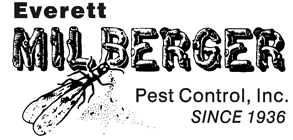Bed bugs are extremely small and can be difficult to identify, but it is a myth that they are invisible to the naked eye. The adults of the species are about the size of an apple seed. The nymphs can be as small as a pinhead and are lighter in color, and thus more difficult to see. The eggs are even smaller and can be very difficult to spot.
There are many bugs that resemble bed bugs, so accurate identification is a critical first step to avoid costly treatment for the wrong pest.
The young (also called nymphs), in general, are:
- Tiny, translucent or whitish-yellow in color.
- if not recently fed, can be nearly invisible to the naked eye because of coloring and size.
Adults are:
- about the size of an apple seed (5-7 mm or 3/16 – 1/4 inch long.)
- long and brown, with a flat, oval-shaped body (if not fed recently.)
- balloon-like, reddish-brown, and more elongated (if fed recently.)
- a “true bug” (characteristics of true bugs include a beak with three segments; antennae that have four parts; wings that are not used for flying; and short, golden-colored hairs.)
- smelly, with a “musty-sweetish” odor produced through glands on the lower side of the body.
Eggs, in general, are:
- tiny, the size of a pinhead.
- pearl-white in color.
- marked by an eyespot if more than five days old.
Bed bugs will become a mahogany or rusty brown upon reaching maturity. They have 6 legs and a set of underdeveloped, non-functional wings. There are several pests that can be mistaken for them, including bat bugs, a newly hatched cockroach, wood ticks (also known as dog ticks), carpet beetles, and spider beetles.
 Where To Look For Bed Bugs
Where To Look For Bed Bugs
These tiny bugs like to hide in small cracks and crevices close to a human environment. They can be found behind baseboards, wallpaper, upholstery, and in furniture crevices. They are also known to survive in temporary or alternative habitats, such as backpacks and under the seats in cars, buses and trains.
Bed bugs likely get their name from their habit of feeding on humans while they sleep in their beds. They are found in virtually every place people tend to gather, including residences, hotels, schools, offices, retail stores and even public transportation. Although they can dine on any warm-blooded animal, they primarily prefer humans. They do not transmit diseases, but their bites can become red, itchy welts.
If you suspect bed bugs in your home, contact a pest professional like Milberger Pest Control promptly. They will be able to inspect your home, confirm the species and recommend a course of treatment.
For more information, call Milberger Pest Control at (816) 761-1313 in Missouri and (913) 384-6760 in Kansas, or click here to request your free inspection.
